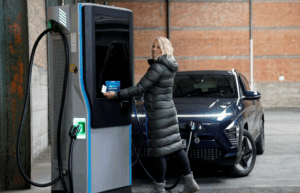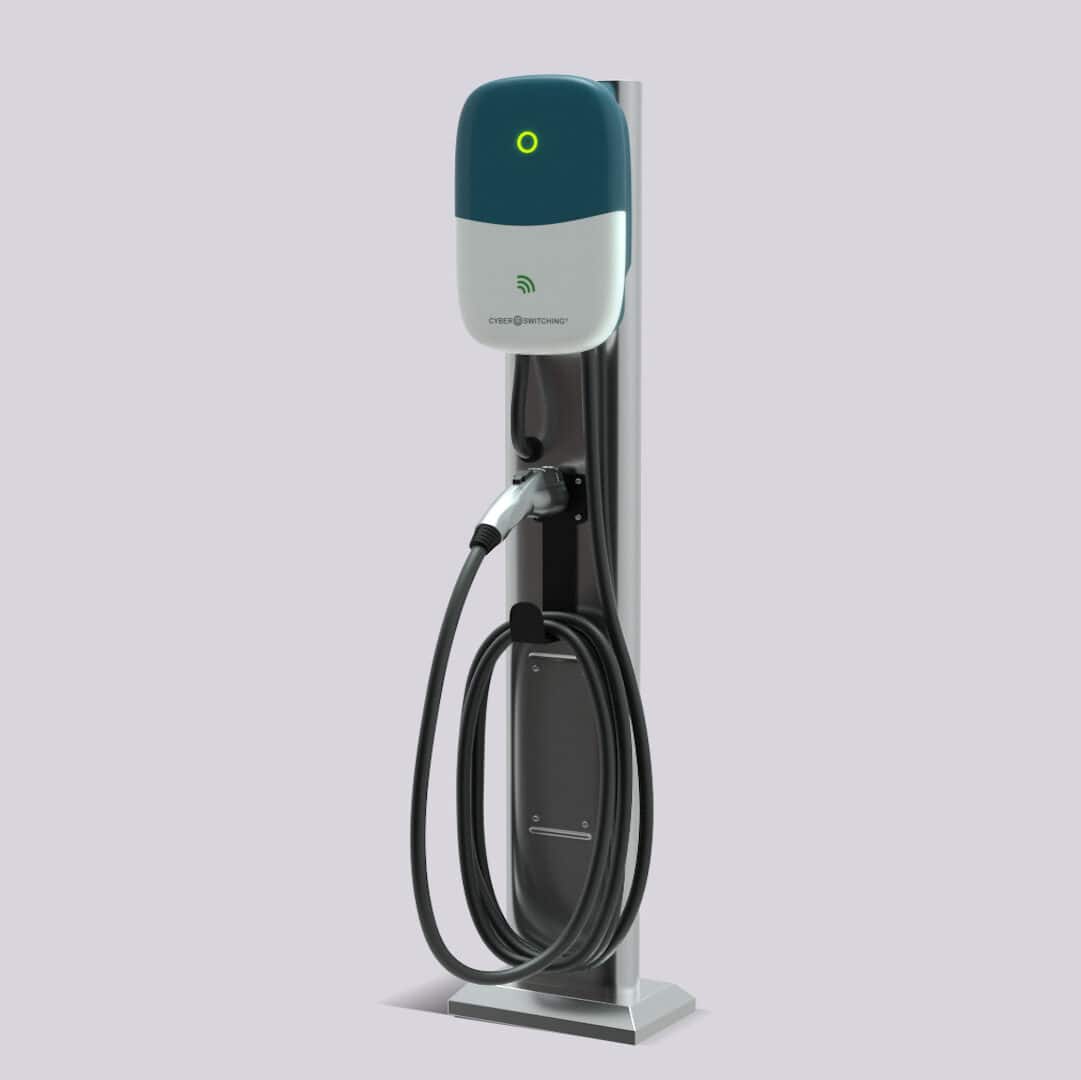
Home / EV Charging News / How Safe Are Electric Cars?
As Electric Vehicles (EVs) become more common on the roads, it is important to ensure your family will be safe on the road around them. Whether you want to buy one of the safest EV cars available in the market or want to learn about electric vehicle safety to make sure your family is safe around these types of vehicles, you are in the right place.
In this article, we will explain every safety aspect of EVs including facts like the main safety concerns in electric vehicles, details on how the EV industry is making EVs safer, basic safety considerations, and also a list of the safest EV models in the market. But first, let us find out whether electric cars are safe or dangerous.
In previous years, the use of electric cars was reserved for a selected group of people. Nowadays, EVs are becoming more popular on the road, which arises some concerns on how safe they actually are. While there are some details to think about, in general electric vehicles are no more dangerous than ICE vehicles. Let us analyze some of the most important aspects of EV safety.
Lithium Ion (Li-Ion) batteries are safer than Lead-Acid batteries since they integrate more stable chemical cores and a Battery Management System (BMS), but there is still fear that this could be an electric car safety issue. Another common fear is that Lithium-Ion battery release hazardous gasses and could cause fires. However, according to the Society of Automotive Engineers (SAE), EV fires are no more dangerous than ICE vehicle fires.
In truth, Lithium-Ion battery fires are extremely rare, there have been less than 200 verified accidents of that type since 2010. This makes EVs less likely to catch a fire than ICE vehicles.
Since EVs operate on a voltage range of 200V – 800V, it is a common misconception that EV batteries represent a constant electrocution risk, but this is not the case. First and foremost, EV batteries are entirely isolated, separating low-voltage and high-voltage areas, this means the vehicle chassis is entirely isolated and is safe to touch and use at all times.
The most important safety reassurance is that EV batteries pass all types of compliance tests to ensure they are resistant to vibrations, thermal shocks, mechanical shocks, water immersion, fire resistant, overcharge, and more tests under the UN ECE R100. Moreover, unlike ICE vehicles, the battery on an electric car is highly unaccessible for common users. This makes electrocution risks from EVs, very low.
The only moment where EV batteries could pose a higher risk of electrocution could be during a car accident, where depending on the crash, wires could be exposed. Floods could be another concern, as although it is safe to assume the battery will not electrify the surrounding waters if the vehicle is submerged, it is recommended to wait for the water to drain before attempting to start the engine. The good news is that new and more developed safety techniques are being implemented to ensure this risk is reduced to a minimum.
Autonomous driving has become a taboo regarding electric vehicle safety issues, but this should not be this way. Many EVs in the market include different levels of driving automation, and according to statistics, it seems that they only represent a safety concern where human error is involved (99% of these crashes are caused by human error).
While this technology requires some more research to improve it even further, autonomous driving has the potential to greatly reduce pedestrian and broadside collisions. This means that in the future, driving EVs with autonomous driving could be even safer than regular driving.
At high speeds, EVs produce the same wind and road noise as ICE vehicles, but they are practically soundless at low speeds since they have no internal combustion engine. This lack of sound represents a potential risk for pedestrians, which is why to increase electric car safety EVs are required to produce sounds under the Federal Motor Vehicle Safety Standard No. 141 when they are stationary, reversing, or driving at speeds lower than 30 km/h (18.64 mi/h).
Considering the little time EVs have been in the market, there is scarce information about EV collisions and EV safety standards. Electrocution and Lithium-Ion battery fires still represent certain risks for EV passengers and even for first responders during EV car accidents.
Electrocution can in theory be easily avoided by integrating several safety protocols. The main implementation to avoid electrocution is the inclusion of automatic disconnection devices that entirely isolates the battery from the rest of the vehicle. Other battery isolation tactics are currently being researched to make EVs even safer in the future regarding electrocution risks.
To improve electric vehicle safety on Lithium-Ion fire hazards, researchers are thoroughly investigating possible causes and preventive measures for EV battery fires. Companies like General Motors are already taking the lead by implementing onboard battery diagnostics to prevent lithium-ion fires.
EVs are subject to practically the same safety standards as ICE vehicles. Tests performed by the National Highway Traffic Safety Administration (NHTSA), the New Car Assessment Program (NCAP), and the Insurance Institute for Highway Safety (IIHS), compare almost the same criterion for both vehicle types.
The IIHS crash tests subject EVs to the same safety crash standards as ICE vehicles, the main difference is the performance of an electrical isolation test for EVs that replaces a fuel pump shut-off during a crash for ICE vehicles. At times, these institutes join forces to subject EVs to the highest safety standards, even performing post-crash EV quarantines to study the probability of Lithium-Ion fires during storage.
According to the ANCAP and IIHS, aside from the high-voltage risk uniquely found in EVs and Hybrid vehicles, both EVs and ICE vehicles feature practically the same safety conditions during a crash. Considering this, electric car safety is practically the same for EVs and ICE vehicles regarding most crash safety concerns.
When it concerns your safety or the safety of your family, you can never be too careful. The following lists include some basic considerations that you should account for to make the use of your EV even safer:
1. Learn more about how EVs work. Understanding the basics of EV batteries, ideal storage temperature, and similar information will make driving your EV safer.
2. Optimize battery usage. Taking care of your battery will maximize its life, save you money by prolonging the battery exchange, and ensure optimal battery working.
3. Watch out for live wires. If you ever find yourself in a situation where you need to assist someone in an electric car accident, do not attempt to touch any exposed wire, particularly if you find a warning labeled wire with a live red or orange color.
4. Drive safely. Avoiding a car accident will reduce electrocution and fire risks to a minimum. Always follow traffic rules, stay alert on the roads, and keep speed limits.
5. Investigate how safe your EV truly is. The IHSS website gives you access to the safety ratings at their site, you can learn more about how truly safe an EV is considering these strict ratings.
As we approach the end of the article, you are now more aware multiple safety considerations and we have learned that electric vehicles are not more dangeor. Good thing is that some EVs are better designed than others, making them safer. In this section we include the safest electric vehicles in the market:
The e-Tron by Audi is an extremely safe EV. This EV achieved superior and good qualifications in most testing standards for the IIHS, which is considered one of the safest electric car options out there. the 2021 model even qualified for the 2021 TOP SAFETY PICK+.
The Tesla Model 3 is considered one of the safest EV options according to the IIHS, the 2021 variation of this EV also qualified for the 2021 TOP SAFETY PICK+. This vehicle passed all tests with superior and good qualifications, except for a minor detail regarding child anchors.
The Volvo XC40 is to be considered one of the safest EV cars available according to the IIHS, which qualified this EV for the 2021 TOP SAFETY PICK+. The IHSS tested the vehicle and gave it all good and superior scores on crashworthiness and crash avoidance & mitigation, leaving only an advanced qualification regarding front crash prevention and an acceptable qualification considering child restraints.

CyberSwitching EV Charger on Pedestal
CyberSwitching Dual EV Charging Station
